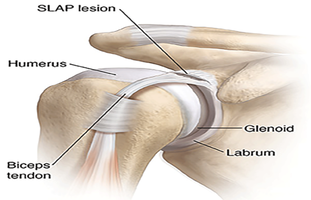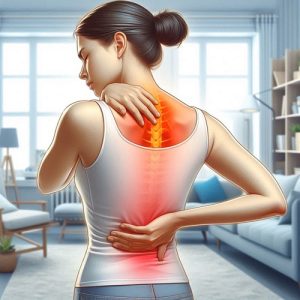Why My Shoulder Is Painful and I Am Unable to Move It: Causes and Solutions
Introduction
Shoulder pain can be both frustrating and debilitating, often limiting the ability to perform daily activities and restricting movement. The shoulder is one of the most mobile joints in the body, but this same flexibility makes it prone to a variety of injuries and conditions. From rotator cuff injuries to frozen shoulder, there are several potential reasons for shoulder pain and reduced mobility.
Understanding the causes of shoulder pain is the first step toward finding the right treatment. This article delves into why your shoulder might be painful and immobile, focusing on common conditions such as tendonitis, bursitis, shoulder arthritis, and more. By the end of this guide, you’ll have a better grasp of your condition and the appropriate steps to seek relief.
In this article, we’ll explore:
- Common causes of shoulder pain and their associated symptoms
- Limited shoulder movement and the conditions that lead to this restriction
- How various shoulder injuries, such as dislocations, muscle strains, and shoulder impingement, can affect functionality
- Diagnosis and treatment options for achieving shoulder pain relief
Why Is This Topic Important?
Living with shoulder pain can significantly reduce your quality of life. Whether you’re an athlete, a worker, or someone simply trying to carry out day-to-day tasks, understanding the root causes of shoulder pain and limited movement can empower you to take action, seek orthopedic consultation, and explore the best treatment options.
Let’s dive into the potential causes and solutions for painful and stiff shoulders.
Common Causes of Shoulder Pain and Limited Movement
1.1 Rotator Cuff Injury
A rotator cuff injury is one of the most common causes of shoulder pain and reduced mobility. The rotator cuff consists of four muscles that stabilize the shoulder joint. Injuries can occur due to overuse, aging, or acute trauma. Common forms include tears and tendinopathy.
- Symptoms: Pain during shoulder movement, weakness, and inability to lift the arm above the head.
- Treatment: Rest, physical therapy, corticosteroid injections, and in severe cases, surgery.
1.2 Frozen Shoulder (Adhesive Capsulitis)
A frozen shoulder is characterized by stiffness and pain in the shoulder joint, often making it difficult to move the shoulder at all. This condition progresses through three stages: freezing (painful), frozen (stiff), and thawing (improving).
- Symptoms: Gradual onset of pain, severe stiffness, and restricted range of motion.
- Treatment: Physical therapy, anti-inflammatory medications, and in some cases, arthroscopic surgery.
1.3 Shoulder Impingement
Shoulder impingement occurs when the tendons of the rotator cuff are pinched or compressed as they pass through the shoulder joint. This can be due to bone spurs, tendonitis, or improper shoulder mechanics.
- Symptoms: Pain when lifting the arm, especially overhead, and difficulty with activities like reaching or throwing.
- Treatment: Rest, anti-inflammatory drugs, and physical therapy focused on improving shoulder mechanics.
1.4 Tendonitis
Tendonitis is inflammation of the shoulder tendons, usually caused by overuse or injury. It frequently affects the rotator cuff tendons, leading to pain and limited movement.
- Symptoms: Pain when moving the arm, especially during activities such as throwing, lifting, or reaching.
- Treatment: Rest, ice, physical therapy, and sometimes corticosteroid injections.
1.5 Bursitis
Bursitis refers to the inflammation of the bursa, a fluid-filled sac that cushions the shoulder joint. Like tendonitis, bursitis is often the result of overuse and can significantly restrict shoulder movement.
- Symptoms: Pain, swelling, and tenderness around the shoulder, particularly during movement.
- Treatment: Rest, anti-inflammatory medications, and sometimes physical therapy.
1.6 Shoulder Arthritis
Shoulder arthritis involves the breakdown of cartilage in the shoulder joint, leading to pain, stiffness, and reduced mobility. The two most common types are osteoarthritis and rheumatoid arthritis.
- Symptoms: Chronic pain, stiffness, swelling, and a reduced range of motion.
- Treatment: Pain management strategies, physical therapy, and in advanced cases, joint replacement surgery.
1.7 Shoulder Dislocation
A shoulder dislocation occurs when the head of the upper arm bone (humerus) pops out of the shoulder socket. This injury can lead to future instability and recurrent dislocations.
- Symptoms: Intense pain, visible deformity, swelling, and an inability to move the shoulder.
- Treatment: Manual relocation of the joint, immobilization, and physical therapy.
1.8 Muscle Strain
Muscle strain in the shoulder is typically the result of overexertion or injury to the muscles surrounding the shoulder joint, such as the deltoids or pectorals.
- Symptoms: Pain, swelling, and tenderness in the shoulder, particularly during movement.
- Treatment: Rest, ice, compression, elevation (R.I.C.E.), and gradual strengthening exercises.
1.9 Shoulder Stiffness
Shoulder stiffness can be a symptom of various underlying conditions, including frozen shoulder, arthritis, or prolonged immobility after an injury.
- Symptoms: Difficulty moving the shoulder, especially after long periods of rest or inactivity.
- Treatment: Physical therapy and exercises to restore mobility.
1.10 Painful Shoulder Symptoms
Shoulder pain can manifest in different ways depending on the underlying cause. Symptoms often include:
- Dull or sharp pain
- Swelling or tenderness
- Reduced range of motion
- Weakness in the shoulder muscles
- Grinding or clicking sounds during movement
Addressing these symptoms requires a thorough diagnosis and targeted treatment plan.
Diagnosing Shoulder Injuries
A proper diagnosis is essential to determine the cause of shoulder pain and limited movement. An orthopedic consultation with a specialist often involves the following steps:
2.1 Physical Examination
During the physical exam, the doctor will check for:
- Range of motion
- Strength
- Tenderness or swelling
- Abnormal shoulder mechanics
2.2 Imaging Tests
To confirm the diagnosis, doctors may order imaging tests, including:
- X-rays: To detect fractures, arthritis, or bone spurs.
- MRI or Ultrasound: To assess soft tissues, such as the rotator cuff, tendons, or bursa.
- CT Scans: In complex cases, CT scans provide a more detailed view of the shoulder structure.
2.3 Diagnostic Injections
In some cases, doctors may administer a diagnostic injection of local anesthetic into the shoulder. If pain relief is achieved, it helps confirm the source of pain.
Treatment Options for Shoulder Pain
3.1 Non-Invasive Treatments
Many shoulder injuries and conditions respond well to conservative treatments:
- Rest and Activity Modification: Limiting activities that aggravate pain.
- Physical Therapy: Exercises to improve range of motion, strength, and stability.
- Anti-inflammatory Medications: NSAIDs help reduce pain and swelling.
- Corticosteroid Injections: These can reduce inflammation in conditions like bursitis or tendonitis.
3.2 Surgical Treatments
For severe cases, surgery may be required:
- Rotator Cuff Repair: If there’s a tear, surgery can help restore shoulder function.
- Arthroscopy: Minimally invasive surgery to treat conditions like impingement or frozen shoulder.
- Joint Replacement: In advanced arthritis cases, shoulder replacement can significantly improve mobility and reduce pain.
Section 4: Trustworthiness – Preventing Shoulder Pain and Stiffness
While some shoulder injuries are unavoidable, others can be prevented with proper care. Consider these tips for maintaining musculoskeletal health and avoiding injury:
- Warm-Up Before Exercise: Always warm up to prepare your muscles and joints.
- Improve Posture: Poor posture, especially during desk work, can lead to shoulder strain.
- Strengthen Shoulder Muscles: Exercises targeting the rotator cuff and surrounding muscles can enhance stability.
- Avoid Repetitive Overhead Movements: Rest and modify activities if you experience shoulder pain.
If you experience persistent shoulder pain and live in Bydgoszcz, consult an orthopedic specialist for an accurate diagnosis and personalized treatment plan. Whether through physical therapy, medications, or surgery, there are numerous paths to recovery that can restore your shoulder’s function and improve your quality of life.
Take action today and seek professional help to relieve your shoulder pain and regain full mobility.



